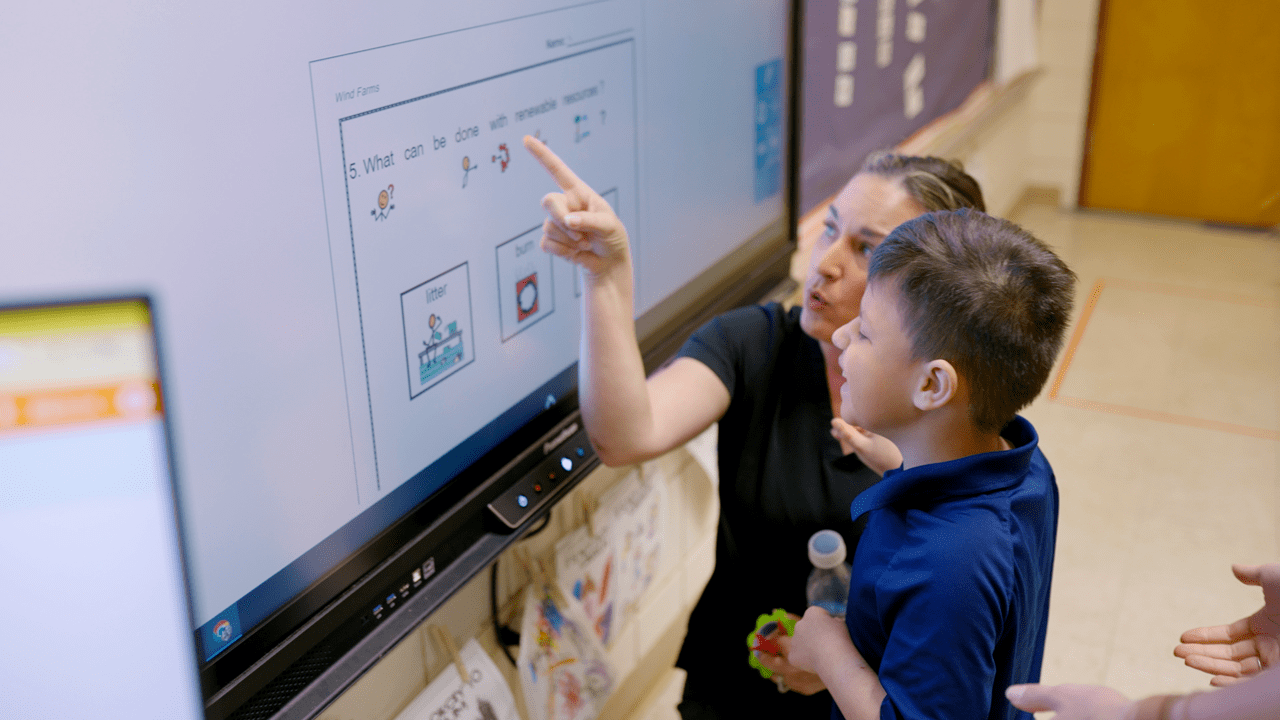In education, schools across the country are recognizing the need to train a generation of teachers to employ a trauma-informed approach. Trauma-informed teaching is hardly a passing buzzword that cycles in and out with changes in administration. Rather, it is a best practice for establishing inviting learning environments where children feel safe and secure. Case in point, the devastating coronavirus pandemic has affected almost every student on the planet, making the need for trauma-informed teaching stronger than ever before.
Trauma-informed teaching strategies equip children with tools to manage their emotions and be available for learning. For some, a caring teacher with this approach can mean the difference between success in school and future opportunities and falling through the cracks. For a situation like coronavirus, it can mean that whole classrooms full of children who have had their worlds upended by difficult schedules, confusing rules, and lost loved ones are still able to show up and positively engage with school.
Prevalence and Impact of Childhood Trauma
Childhood trauma is widespread. Its impact is serious and lasting if interventions aren’t put in place early. A few sobering facts to consider:
- Almost two-thirds of children report having experienced at least one traumatic event, and more than 20% report having experienced three or more traumatic events
- Traumatic stress adversely impacts brain chemistry and function*, which makes learning more difficult.
- In the classroom, traumatized children are more likely to experience:
- Difficulty regulating emotions
- Difficulty trusting adults
- Negative thinking patterns
- Inappropriate social interactions
- Aggression
- Avoidance or withdrawal
*Specifically, trauma impairs the amygdala and hippocampus in the temporal lobe and the prefrontal cortex in the frontal lobe, the areas of the brain responsible for executive functioning skills, emotions, behavior, memory, and understanding.
Simply put, trauma can be devastating.
But, children who have experienced trauma are not without hope. There are research-driven teaching strategies and interventions that work.
Children spend more of their waking hours with their teachers and school staff than they do with their family members. Educators, therefore, have an incredible opportunity to positively impact the lives of all children, including those who have experienced trauma. Let’s look at a few tools you can use to make that difference.
Trauma-Informed Teaching Strategies
Trauma-informed teaching is not so much a prescribed curriculum as it is a way of relating to students. It’s a lens through which you approach all aspects of teaching, from the physical layout of the classroom to daily routines and discipline strategies.
Know the signs
One of the first steps to becoming a trauma-informed teacher is to know what to look for. Many off-putting student behaviors that seem to be rooted in defiance or apathy can be red flags for trauma. If a student is displaying signs of aggression, has ongoing difficulty focusing, frequently gets sick (especially with headaches or stomach aches), cries out or yells often, gives up or shuts down easily, or fidgets frequently, take note. These symptoms could point to another root problem, but they’re always worth paying attention to.
It’s also important to remember what constitutes trauma. Give your lens a little wider angle. Abuse and neglect are absolutely traumatic. But so are stressors like having separated or divorced parents, an incarcerated family member, a household member dealing with substance abuse, or witnessing violence in the community, for example.
During a global pandemic school teams must, they must somberly recognize that the entire nation has experienced a collective trauma. Every student will have been affected. It’s important to remember that the virus has impacted us all differently. Some may not have understood or noticed much of a change. Many others will be grieving the devastation of losses and processing the huge changes to their world for a long time to come.
Create a predictable routine
Children thrive on consistency.
Children thrive on consistency.
Children thrive on consistency.
As a teacher, you understand how important structure and routine are for kids. This is especially true for students dealing with trauma who can be easily triggered by a lack of boundaries and routines. Daily agendas are important. Classroom systems like how to get the teacher’s attention, when to go to the calm-down corner, and where the homework is posted are all important. These predictable structures give students a sense of what to expect and how long things will take.
The normalcy of a typical day at school in a safe classroom with clear expectations can be profoundly comforting for those whose home or community lives are chaotic.
Use respectful interaction strategies
Phrasing, tone, and audience make a big difference for many students who are easily triggered by the directive of an authority figure. This is especially true for students who have experienced trauma and students with behavioral disorders. The trauma-informed approach aims to provide a choice whenever possible, uses a kind but firm tone, and offers correction privately.
For example, give the student time to comply with your request: “Please pick up the trash around your desk before we leave for lunch” versus “Pick up this trash right now!” Instead of calling out a correction to a student from the front of the classroom, try writing a quick note and placing the paper on their desk. They save face with their peers and avoid the trigger of an authoritative power figure calling out a directive.
Implement social-emotional learning tools
Social-emotional learning (SEL) is a big deal. There is copious research behind the effectiveness of meditation, deep-breathing, and mindfulness exercises on student behavior and attention. It is also important to explicitly teach them about the stress response, resiliency, and triggers. When traumatized students learn to name their emotions and understand the physiological response happening in their bodies when they are triggered, they are better able to cope and ask for help before they act out.
Use restorative justice discipline practices
Restorative justice “empowers students to resolve conflict on their own and in small groups.” It’s an approach to discipline that shifts away from punitive measures and toward restoration of relationships. Restorative justice helps rebuild a traumatized student’s sense of fairness and empowers them to help make things right. Instead of zero-tolerance policies that hand out immediate consequences, restorative justice practices emphasize de-escalation, identifying root causes, and teaching healthy communication—these are healing skills that those affected by trauma so desperately need.
Be mindful of compassion fatigue
It is not uncommon for dedicated teachers to become emotionally attached to their students. Yes, they need our compassionate support. It’s okay to care! But students also need us to be healthy. They need us to establish and model appropriate boundaries and have the energy to show up each day with a clear mental state. Teachers who work with traumatized students are more likely to experience compassion fatigue and suffer from secondary or vicarious trauma.
Signs of compassion fatigue may include:
- Difficulty focusing
- Difficulty sleeping
- Chronic exhaustion
- Anxiety or depression
- Appetite changes
- Increased or unexplained anger and/or sadness
- Depersonalization
- Desensitization
If you recognize compassion fatigue taking root, make changes to start taking care of yourself right away. Things like a balanced diet, adequate sleep, and exercise are good first steps. You may also need to talk to your school principal for support, seek help from a mental health professional, or adjust some of your professional responsibilities.
It takes a village
When a child chooses to share their story with you, it’s usually appropriate to let them do so. It is an honor to be a trusted adult in their life, and many studies have shown that it takes just one caring adult to help change the trajectory of a traumatized child.
However, one way you can continue to honor the child’s story and healing process is by recognizing when you need to involve other professionals, such as the school counselor or social worker, or in some cases, child protective services or law enforcement. Don’t carry the weight alone—for the sake of the child’s healing and for your own boundaries and mental health.
Childhood trauma is prevalent throughout our nation’s schools. Left untreated, it can have devastating long-term outcomes. The good news is that there are concrete tools and strategies that educators and caregivers can use right away to counteract the impact of trauma.
Thank you for being a caring and trusted adult!



